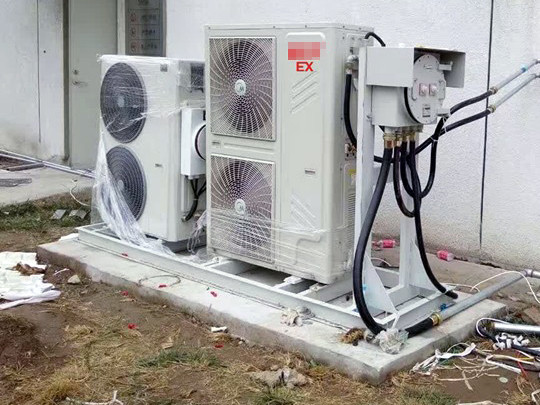Ha nako e ntse e tsoela pele, li-airconditioner li fetohile ho tloha ho tse tloaelehileng ho ea ho tse thibelang ho phatloha, 'me khafetsa ea likarolo tsena tse tsoetseng pele le eona e fetohile. Empa li-air-conditioner tsa inverter li hlahella joang ha li bapisoa le li-air conditioner tsa tsona tse tloaelehileng tse thibelang ho phatloha? Ka tlase, Re hlahloba mekhoa e mengata e ntlafalitsoeng ea ts'ireletso ea li-air conditioner tse thibelang ho phatloha, tse netefatsang ts'ebetso e sireletsehileng le e sebetsang haholoanyane nakong ea ts'ebeliso ea letsatsi le letsatsi.

1. Tšireletso ea Overheat bakeng sa Lichelete tsa Mocheso oa ka hare:
Ha o sebetsa ka mokhoa oa ho futhumatsa, mabelo a butle a fan kapa li-filters tse koetsoeng li ka sitisa phepelo ea mocheso ho tsoa khoeleng ea kahare, ho baka bokahodimo ba motjheso mocheso ho tsoha. Boemo bona ha bo fokotse ts'ebetso ea ho futhumatsa feela empa hape bo ka lebisa ho futhumatsang ha lisebelisoa. Kahoo, li-air-conditioner tse thibelang ho phatloha li kenyelletsa tšireletso e felletseng ea mocheso bakeng sa li-exchangers tsa mocheso ka tlung.. Sistimi e thibela ho eketseha ha maqhubu a compressor ha mocheso oa kamore o feta 53 ° C; e fokotsa maqhubu a compressor mme e sebelisa mochini oa fan oa kantle ka lebelo le tlase ha e feta 56 ° C.; 'me e emisa konpresser le ho kenya ts'ireletso ea mocheso o feteletseng kapa oa boima bo feteletseng ha mocheso o feta 65°C.. Mehato ena ea bohlokoa ea mocheso e hlahlojoa le ho hlokomelisoa ka liphanele tsa pontšo, mabone a pontshi, le buzzers.
1. Compressor Overcurrent Tšireletso:
Ho itšireletsa khahlanong le maqhubu a sebetsang a feteletseng a ka senyang maqhubu a motlakase oa compressor, li-air conditioner tse thibelang ho phatloha li na le tšireletso e matla ea overcurrent. Nakong ea ho pholisa, haeba hona joale compressor e otla 9.6A, microprocessor ea tsamaiso e etsa hore ho be le letšoao la taolo ho thibela ho eketseha ha maqhubu; le 11.5A, e fana ka matšoao a ho fokotsa maqhubu; le 13.6A, e kenya tšebetsong lets'oao le sireletsang ho emisa ts'ebetso ea compressor. Li-protocol tse tšoanang li sebetsa nakong ea ho futhumatsa, ka litekanyo tse khethehileng tsa hajoale tse behiloeng ho 13.5A, 15.4A, le 18a, ka ho latellana. E 'ngoe le e' ngoe ea mekhahlelo ena e mahlonoko e bontšoa ka mokhoa o hlakileng ho mosebelisi ka liphanele tsa ponts'o, mabone a pontshi, le li-buzzers bakeng sa tlhokomeliso e phahameng le polokeho.
 Shenhai Ho phatloha-Bopaki
Shenhai Ho phatloha-Bopaki
